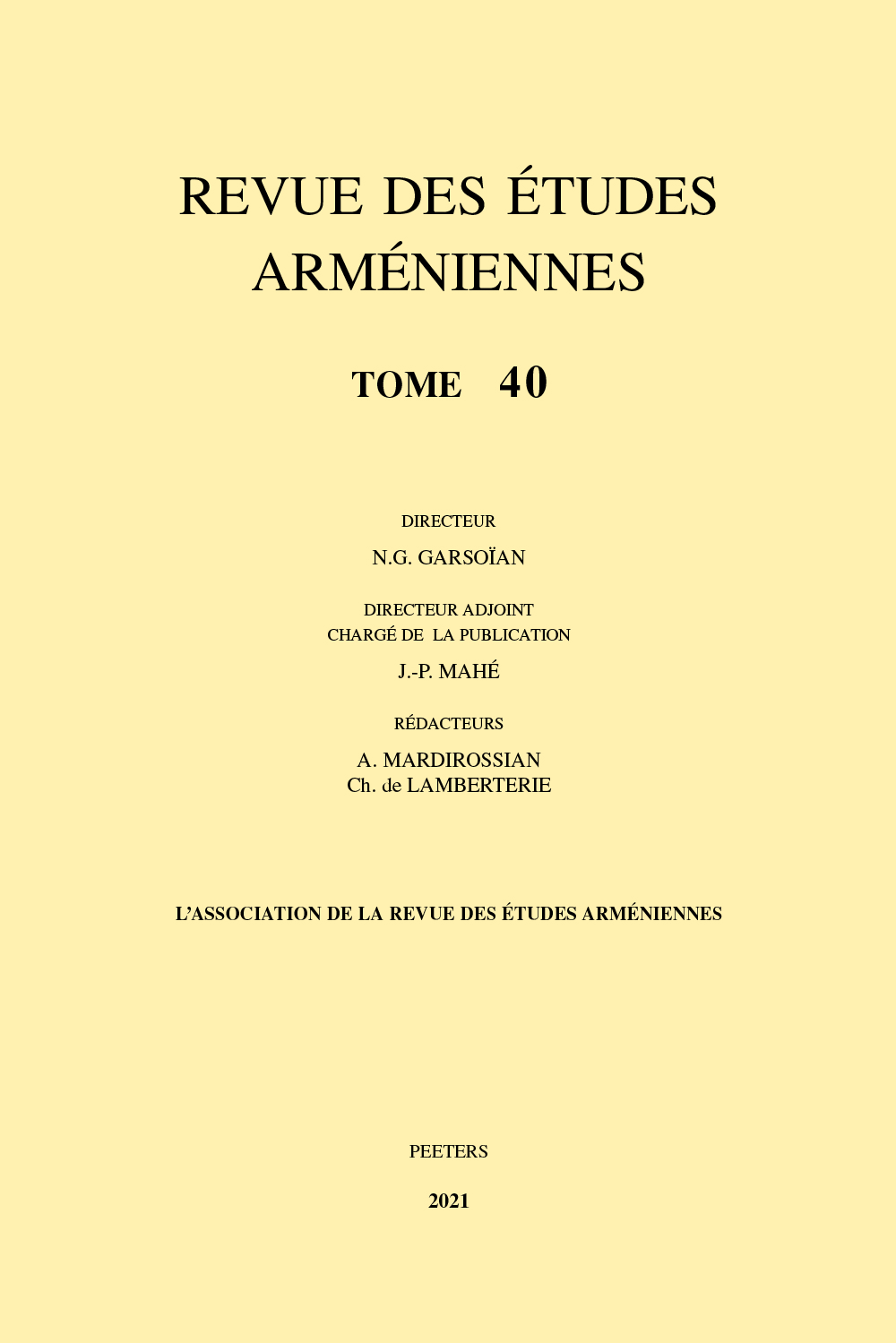 previous article in this issue previous article in this issue | next article in this issue  |

Preview first page |
Document Details : Title: Syntactical Peculiarities of Relative Clauses in the Armenian New Testament Author(s): MEYER, Robin Journal: Revue des Études Arméniennes Volume: 38 Date: 2018-2019 Pages: 35-83 DOI: 10.2143/REA.38.0.3285778 Abstract : This paper endeavours to show that, at least as far as the syntax of relative clauses is concerned, the form of the Armenian language employed in the Bible translation does not fully correspond to that found in non-translated Armenian literature. It will be shown that, as argued by Lafontaine and Coulie (1983), next to Classical and Hellenising Armenian, we must construe a pre-Hellenising layer of the language. This layer, it is argued, is not to be separated from the Yunaban Dproc‘; instead, both form part of a continuum of Greek influence on Armenian. This is evident in the applicability of different case matching restrictions in Biblical texts compared to the works of Agat‘angełos, Eznik, and Ełišē, specifically in free and light-headed relative clauses. The case of the relative pronoun in Greek relative clauses can be determined by the matrix clause in Biblical Armenian, whereas in non-translated literature such structures do generally not occur. It will further be argued that cases of Armenian ‘relative attraction’ present almost exclusively in free relative clauses; taking as its basis patterns put forward by Grosu (1994) and Keenan and Comrie (1977), these cases of attraction, together with evidence from Greek, will be taken as indication for the existence of what may be called Discourse Accessibility Hierarchy. |
|


